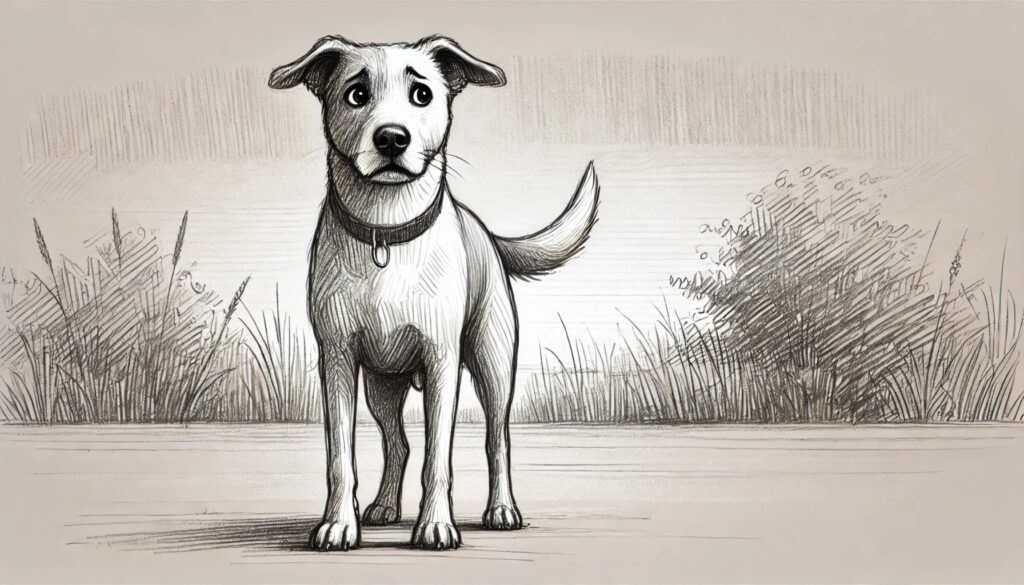
Does My Dog Have Anxiety? Recognising the Signs and What to Do
If you’ve ever asked yourself, “Does my dog have anxiety?”, you’re not alone. Dog anxiety is a common issue that can affect any breed, age, or size of dog. Understanding what anxiety looks like in dogs and knowing how to help can make all the difference in their quality of life.
In this post, we’ll explore the signs of dog anxiety, its potential causes, and steps you can take to help your furry friend feel calmer and more secure.
Signs Your Dog May Have Anxiety
Dogs can’t tell us how they’re feeling in words, but their behaviours often give us clear signals. Common signs of anxiety in dogs include:
- Excessive barking or whining: Dogs may vocalise more than usual, especially when left alone or in stressful situations.
- Pacing or restlessness: An anxious dog might have trouble settling, moving constantly as if they can’t relax.
- Destructive behaviour: Chewing furniture, digging at doors, or tearing up objects can sometimes be a way dogs cope with anxiety.
- Shaking, trembling, or hiding: Physical signs like trembling or retreating to a hiding spot can indicate fear or unease.
- Changes in appetite: Anxiety may cause a dog to eat less or stop eating altogether.
- Panting and drooling: While panting can be normal after exercise, excessive panting when your dog isn’t active may be a stress signal.
- Excessive grooming or licking: Repeated licking or grooming, even to the point of creating bald spots, can be a sign of anxiety.
If you’ve noticed any of these behaviours, it’s worth considering whether anxiety might be the cause.

What Causes Anxiety in Dogs?
Understanding the root cause of your dog’s anxiety can help you address it more effectively. Largely these issues relate to the dog’s experiences and socialisation gaps during the critical periods of development. You may find that certain situations or events create anxiety in your dog. Some common triggers include:
- Separation: Dogs with separation anxiety become stressed when their owners leave the house.
- Loud noises: Thunderstorms, fireworks, and other loud noises can be terrifying for many dogs.
- Changes in routine or environment: Moving to a new home, adding a new pet, or even changing work schedules can cause anxiety.
- Trauma or negative experiences: Dogs who’ve had unpleasant past experiences, such as being abandoned or mistreated, may develop chronic anxiety.
- Socialisation issues: A lack of exposure to different people, animals (including dogs) places, or situations during puppyhood can make adult dogs more fearful or anxious when exposed to these things during day to day life.
How to Help an Anxious Dog
If you suspect your dog has anxiety, there are steps you can take to help them feel more comfortable:
- Create a safe space: Give your dog a quiet area where they can retreat when feeling stressed. This might be a crate, a bed in a corner, or a specific room they associate with calm.
- Stick to a routine: Consistency in feeding, walking, and playtimes helps reduce uncertainty and stress.
- Exercise and mental stimulation: Regular exercise and activities like puzzle toys can help burn off nervous energy and keep your dog’s mind engaged.
- Desensitise and counter-condition: Gradually expose your dog to anxiety triggers in a controlled way, pairing them with treats or positive experiences. For example, play soft thunder sounds at a low volume while rewarding your dog with treats to help them feel less afraid.
- Consider calming aids: Calming collars, sprays, or supplements can help some dogs manage stress.
- Professional training: If anxiety persists, consult a professional dog trainer or behaviorist to develop a tailored plan for your dog. There are a number of fundamental lifestyle training exercises that can improve the relationship with your dog and their relationship to the environment around them.

It is important to note that some behaviours can present in a similar way to anxiety but are really symptoms of a lack of guidance around acceptable behaviours, lack of stimulation/exercise, or patterns of behaviour that have led to reward in the past. Behaviours that can be confused with anxiety include:
- Reactivity and barking generally
- Jumping on people for attention
- Boisterous behaviour and inability to settle
- Tail chasing and other obsessive behaviours.
We always recommend consulting a quality dog trainer in the first instance to ascertain if you dog has a behavioural issue or is not having it’s needs met, versus genuine anxiety.
Why You Should Address Dog Anxiety
Anxiety isn’t just unpleasant for your dog—it can also lead to long-term health issues if left untreated. Dogs deserve to feel safe and happy, and by recognising the signs of anxiety and taking proactive steps, you can improve their emotional well-being.
Final Thoughts
If you’ve ever wondered, “Does my dog have anxiety?”, the signs and behaviours mentioned above can help you determine if your dog may need support. With patience, consistency, and the right approach, you can help your dog overcome their anxiety and enjoy a more balanced, stress-free life.
Have questions about your dog’s behaviour? Leave a comment below or contact us—we’re here to help!

*Direct K9 Services PTY LTD may receive a commission from this service.


